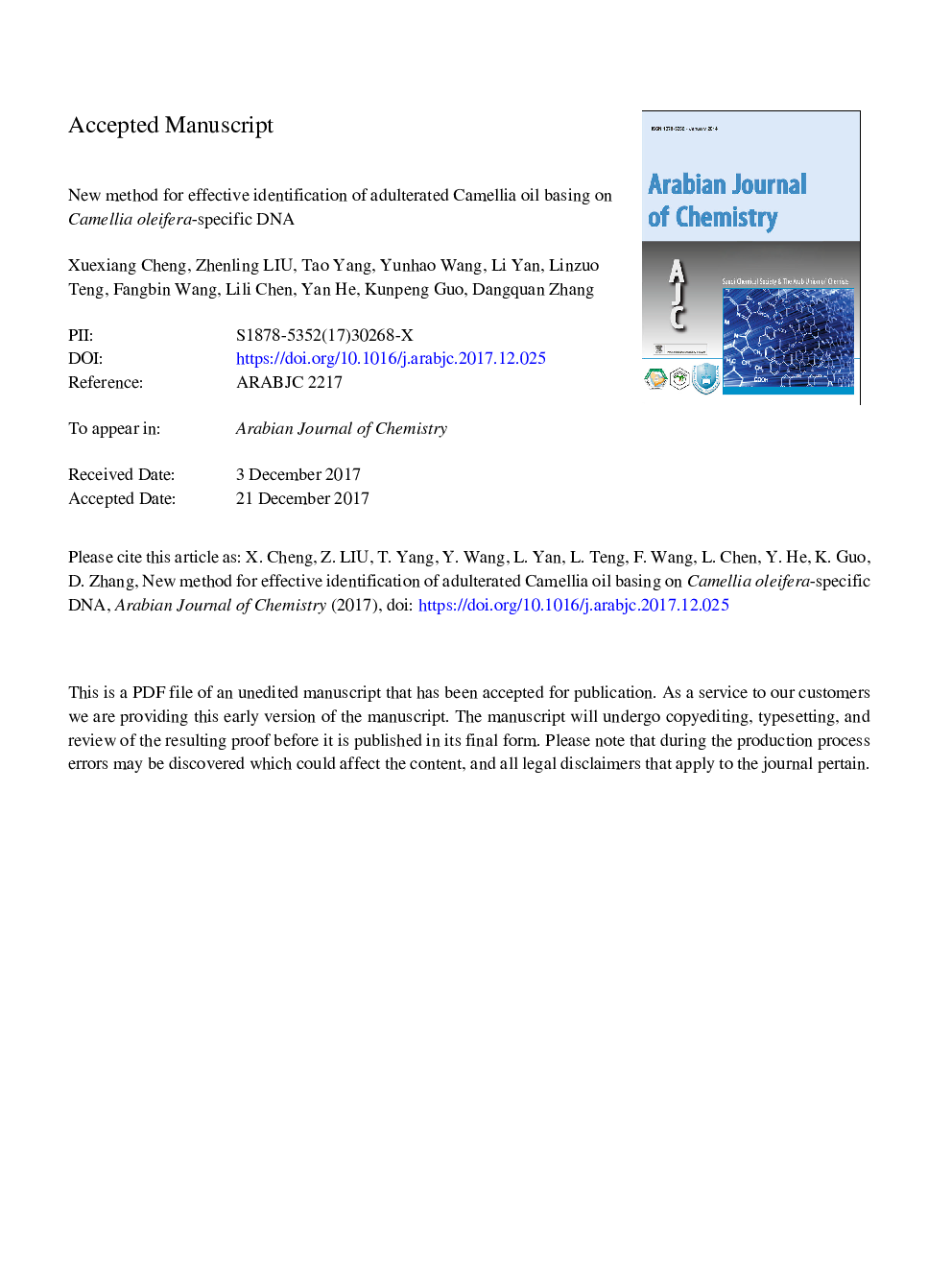| Article ID | Journal | Published Year | Pages | File Type |
|---|---|---|---|---|
| 10154583 | Arabian Journal of Chemistry | 2018 | 12 Pages |
Abstract
Camellia oil obtained from Camellia oleifera seeds is rich in unsaturated fatty acids and unique flavors, and has become a rising high-quality edible vegetable oil in the world. However, honored as the “Oriental olive oil”, Camellia oil was widely adulterated for the situation of high price and short supply. At present, the identification of adulterated plant edible oil is mainly based on the composition and content of fatty acids. Here, the fatty acid composition and content of the main vegetable edible oils were determined. It is found that the fatty acid composition and content are susceptible to the change of the origin, variety and climate of the raw materials, and adulterated oils could even be made extremely similar to Camellia oil by the target combination of fatty acid content, therefore it is difficult to accurately identify the adulteration of Camellia oil through the composition and content determination of fatty acids. Camellia oleifera DNA was used as the breakthrough point for adulteration identification. Basing on the EST library and transcriptome data of Camellia oleifera, 116 candidate specific DNAs were screened out by bioinformatics, then the optimized methods of trace DNA extraction in Camellia oil were established. Further, three specific Camellia oleifera DNAs that could only be PCR amplified using Camellia oil- extracted DNA as template were finally screened out, which were confirmed by exclusive PCR amplifications using DNAs of other edible oils as templates. One of the specific DNAs was used to make the concentration regression curves of trace DNA by qPCR (Quantitative real-time PCR). The computational model was successively established between the adulteration ratio and the Ct value of the qPCR by adulteration imitation of different proportions of Camellia oil. Finally, a complete identification system of Camellia oil adulteration was firstly established basing on the specific DNA of Camellia oleifera, and it may provide a new idea and method for identification of adulterated Camellia oil.
Related Topics
Physical Sciences and Engineering
Chemistry
Chemistry (General)
Authors
Xuexiang Cheng, Tao Yang, Yunhao Wang, Bingqian Zhou, Li Yan, Linzuo Teng, Fangbin Wang, Lili Chen, Yan He, Kunpeng Guo, Dangquan Zhang,
